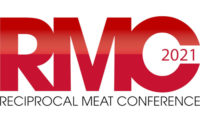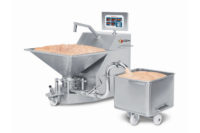Evaluate utility tariff options
It is up to the meat-processing company or their energy-management provider to determine whether they are paying the lowest possible tariff. Utility companies generally have no obligation to ensure that energy users are receiving their best tariff. As tariffs change and operating parameters within meat-processing plants are altered, meat processors need to examine alternative tariffs to make sure they are on the one best-suited for them.
Evaluate demand response programs
Within the last few years, electric utility and power pool operators have developed programs that provide incentives for meat processors to curtail their energy uses during times of high demand. In exchange for cutting back on the energy they use, meat processors receive monthly payments from the utility. Such programs are basically interruptible electric programs, but the ability to manage the programs has been greatly enhanced with better meter and control technology. There are a growing number of businesses signing on to demand response programs, and it is beneficial for almost any plant to take a look at this recent approach.
Explore energy-efficiency projects and programs
Meat processors should inventory potential energy-efficiency projects and rank them in terms of payback. Upgrading compressor controls so compressors operate more efficiently can play a considerable role in curtailing energy costs. As circumstances such as energy costs and corporate payback thresholds change, it is important to update the inventory of energy-efficiency projects and equipment upgrades. In addition to examining energy-efficient projects within the plant, it is also important to identify and take advantage of energy-efficiency programs offered by utility companies and state and federal agencies.
Implement an energy-use and cost-tracking system
Surprisingly, many food processors do not have a good idea of how much energy they use or how much it costs. Oftentimes energy bills come into accounts payable and get rolled up into a general ledger, without tracking the energy costs in a manner that is useful at a management level. Some energy-management providers allow customers to access their energy usage and costs through a Web-based system. The system provides a variety of different reporting tools and information that can be tailored to fit a specific company’s needs.
Make time to save money
Given the increasing pressure placed on meat processors, it is becoming difficult for corporate managers to devote the necessary time it takes to maximize the opportunities to save on energy costs. Taking the time to implement a strategic energy-management plan, enlisting the services of an energy-management company ” or a combination of the two” will provide meat processors with an opportunity to save a considerable amount of money on their energy budget.
Get our new eMagazine delivered to your inbox every month.
Stay in the know with The National Provisioner's comprehensive coverage of the meat and poultry processing industry.
SUBSCRIBE TODAY!Copyright ©2024. All Rights Reserved BNP Media.
Design, CMS, Hosting & Web Development :: ePublishing



Report Abusive Comment